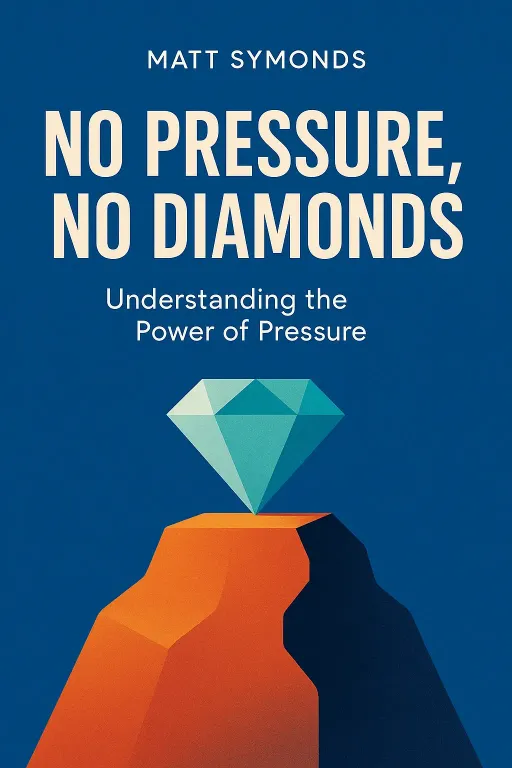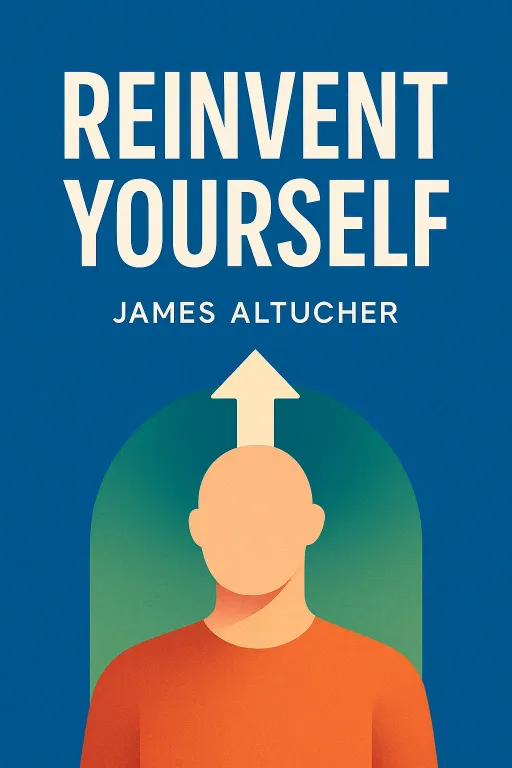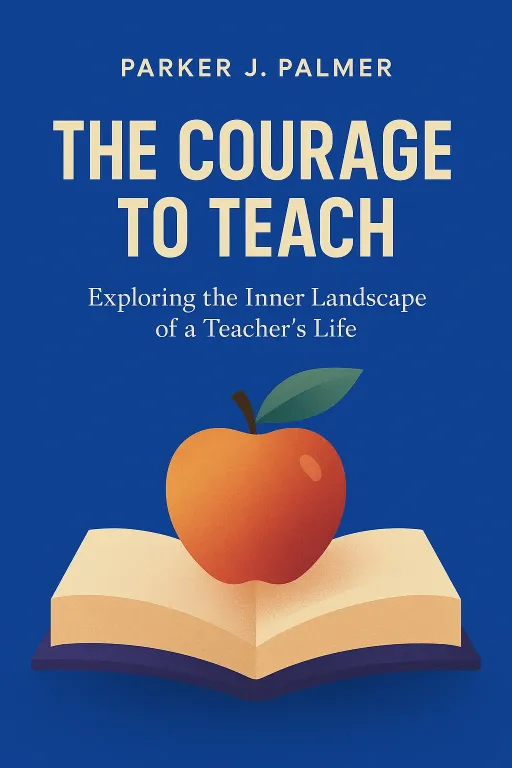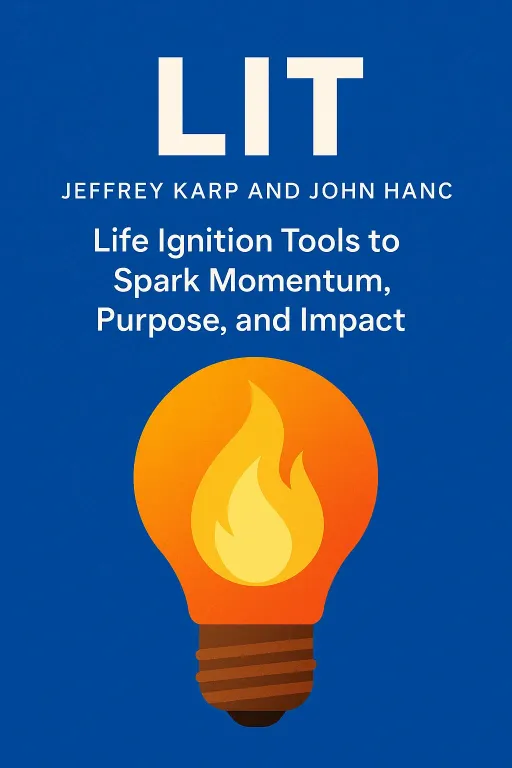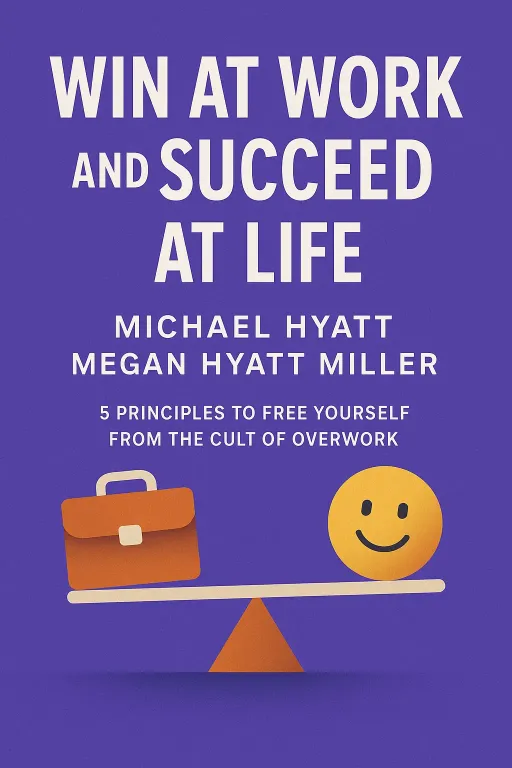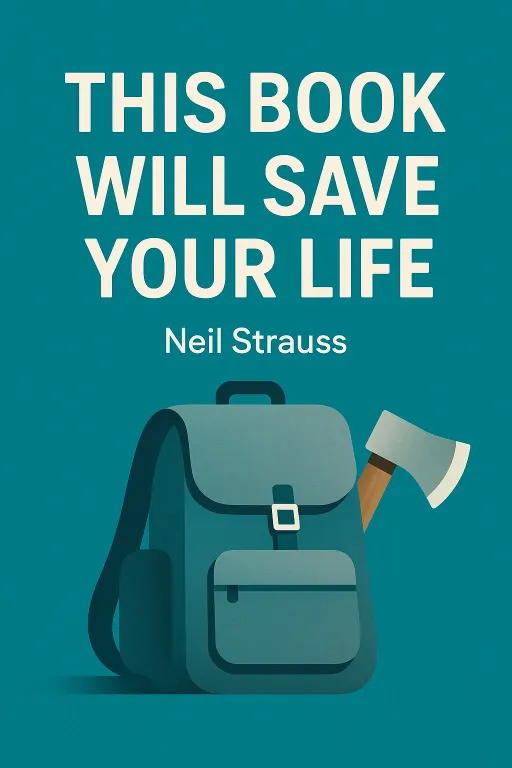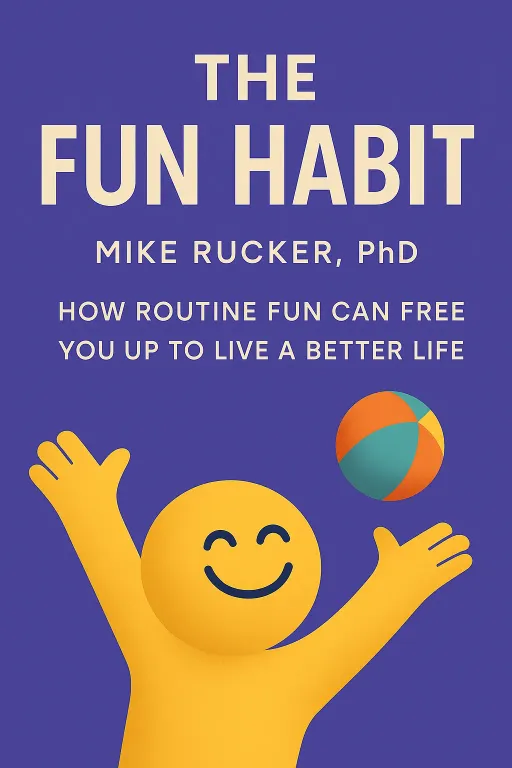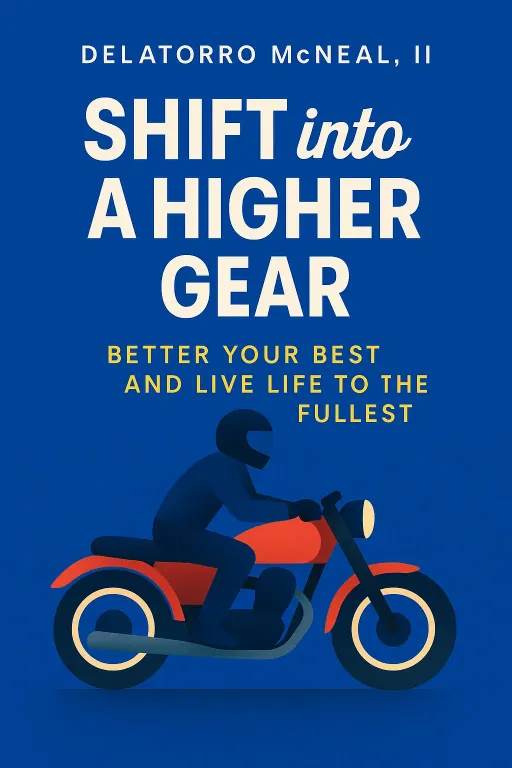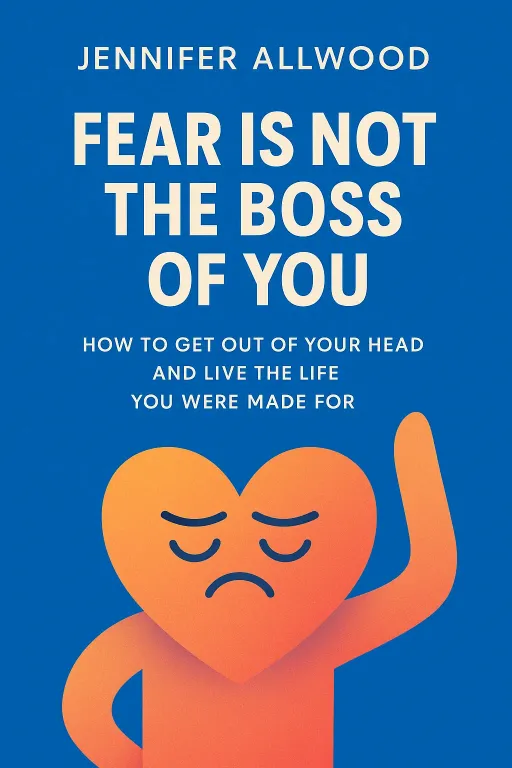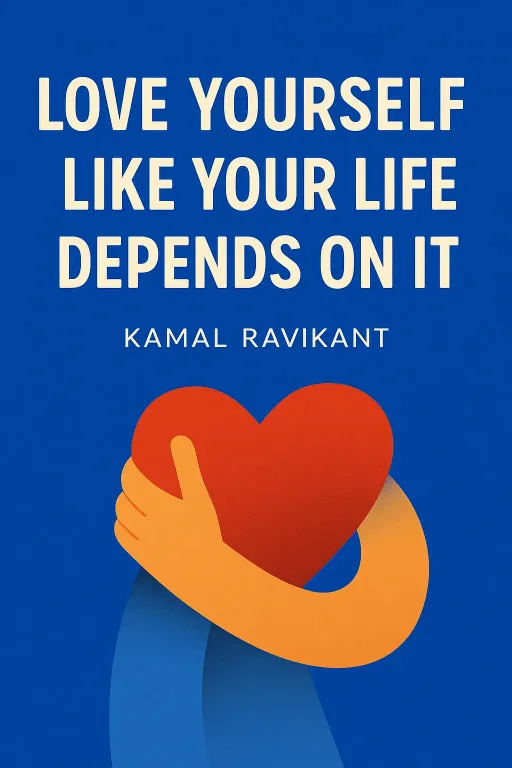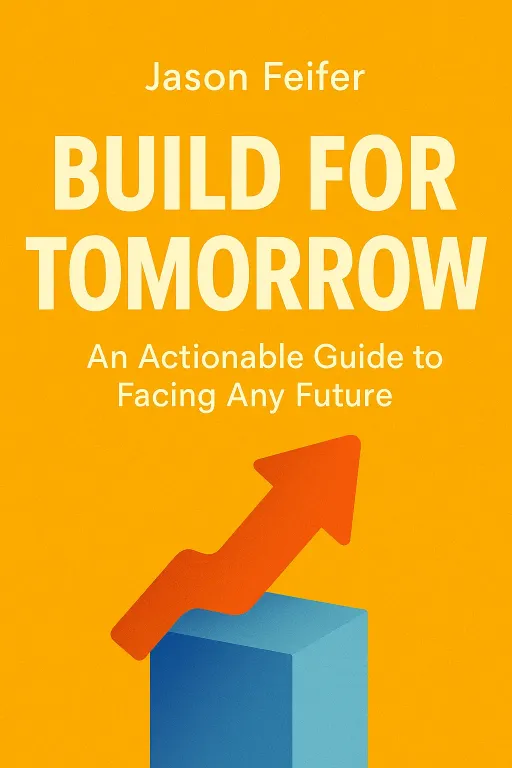
The Change Algorithm: Debugging Panic & Building Your Future
12 minGolden Hook & Introduction
SECTION
Nova: What if life's biggest changes—a new job, a market crash, a global pandemic—are just like a massive, unexpected system update you didn't ask for? Your first instinct is panic. 'This is going to break everything!' But what if it's actually an upgrade?
zoey: That’s a feeling every software engineer knows all too well. You see the notification for a major version update and your heart just sinks for a second.
Nova: Exactly! And in his book 'Build for Tomorrow,' Jason Feifer gives us a user manual for these moments, and that’s what we’re so excited to explore today. We're here with Zoey, a software engineer in the healthcare industry, a field that is basically at the epicenter of constant, high-stakes change. Welcome, Zoey!
zoey: Thanks for having me, Nova. That metaphor is perfect. In my world, you either adapt to the new update, or your application becomes obsolete. There isn't much of a middle ground.
Nova: Well, that's the perfect setup for our conversation. Today we'll dive deep into this from two perspectives. First, we'll explore why we panic in the face of change and the disastrous mistakes that can lead to, using the bizarre story of the butter industry's war on margarine.
zoey: I am very curious about that one.
Nova: It's a wild ride. Then, we'll discuss the art of adaptation and how to find those game-changing opportunities that make you say, 'I would never go back,' by looking at the epic clash between Netflix and Blockbuster. Sound good?
zoey: Sounds fantastic. Let's do it.
Deep Dive into Core Topic 1: Decoding the Panic Response
SECTION
Nova: Alright, so let's start with that first, very human reaction: panic. Feifer argues it's the first of four phases of change: Panic, Adaptation, New Normal, and Wouldn't Go Back. To really understand the danger of getting stuck in that first phase, we have to go back in time... to a world utterly terrified of margarine.
zoey: Okay, I'm hooked. Terrified of margarine?
Nova: Completely. So, the story starts in the mid-1800s. The French emperor, Napoleon III, needs a cheap, stable butter substitute for his soldiers and his less-affluent citizens. A chemist answers the call and invents what we now know as margarine. It's made from beef tallow at the time, but it's cheap, it lasts a long time, and it spreads. When it comes to America, it's a huge hit with the working class.
zoey: So it's a disruptive technology, basically. It solves a problem for a huge market segment that the incumbent—butter—wasn't serving well.
Nova: Precisely. And how do you think the powerful, established American dairy industry reacted to this innovation? Did they try to make butter cheaper? Did they create a higher-quality, artisanal product to differentiate themselves?
zoey: Based on the theme of this section, I'm going to guess... no. They panicked.
Nova: They panicked. Hard. Instead of innovating, they launched a full-scale war. First, they started massive fear campaigns, publishing cartoons of margarine being made in filthy factories with dead animals. They called it unnatural and dangerous. When that didn't fully work, they turned to politics. They used their lobbying power to push for laws to hamstring margarine.
zoey: What kind of laws?
Nova: This is the best part. They couldn't get it banned outright, so they tried to make it as unappealing as possible. Several states, pushed by the dairy lobby, passed laws mandating that margarine had to be dyed an unappetizing, sickly pink color.
zoey: You're kidding. Pink? That’s so petty and, honestly, kind of hilarious. It’s such a desperate, illogical move.
Nova: Isn't it? They thought, 'If we can't beat them, we'll make them ugly.' But the strategy completely backfired. The Supreme Court eventually struck down the pink-dye laws. So, the margarine companies got clever. They started including a little packet of yellow food coloring with their white margarine. It turned the act of coloring your margarine into this little DIY project at home. It actually increased engagement with the product!
zoey: That's brilliant. They turned a legislative hurdle into a feature.
Nova: Exactly. And the result of the butter industry's panic-driven war? By the 1950s, margarine was outselling butter in the United States. Their entire strategy of resisting and attacking, rather than adapting, was a catastrophic failure.
zoey: Wow. That story is a perfect analogy for something we talk about constantly in software: technical debt. It's when you have an old, clunky system, and instead of investing the time to rebuild it with modern technology, you just keep adding messy patches and workarounds.
Nova: Tell me more about that.
zoey: The butter industry was trying to patch a dying business model with legislation and fear, instead of building a new, better one. They were accumulating 'strategic debt.' In software, that debt eventually gets so large the entire system collapses under its own weight. You can't patch it anymore. You see companies do this all the time—they'll fight a new programming language or a new cloud platform, trying to protect their old, familiar, but inefficient way of doing things. They're focused on protecting the past, not building for the future.
Nova: That's it right there. Feifer's whole point about the panic phase is that it makes you irrationally focus on what you might, and you become completely blind to what you could. You're so busy trying to save the old thing that you don't even see the opportunity to create the new thing.
zoey: And you waste all your resources fighting a battle you're destined to lose anyway. The butter lobby spent decades and millions of dollars just to delay the inevitable, when they could have been innovating. It’s a powerful lesson.
Deep Dive into Core Topic 2: The Adaptation Algorithm
SECTION
Nova: So if the butter industry is a masterclass in what to do, let's look at the flip side. This brings us to Feifer's other phases: Adaptation, leading to the 'New Normal' and that magical 'Wouldn't Go Back' moment. And there's no better story for this than the ghost of Blockbuster video.
zoey: Ah, the classic. A story we were all told in business 101, but I'm curious to see it through this framework.
Nova: Right? So, we all know the basics. In the year 2000, Blockbuster was a nine-billion-dollar behemoth with thousands of stores. Netflix was a tiny, struggling startup that mailed DVDs in red envelopes and was losing money. Reed Hastings, the CEO of Netflix, flew to Dallas to meet with Blockbuster's CEO. His proposal: Blockbuster buys Netflix for $50 million, and Netflix will run Blockbuster's online brand.
zoey: And the Blockbuster executives famously laughed him out of the room.
Nova: They literally did. They saw Netflix as a tiny, niche business and their mail-order model as a joke. They were the dominant players, focused on their physical stores and, crucially, the revenue from late fees—the very thing that annoyed customers into looking for alternatives. Blockbuster was in the panic phase, but it was a panic disguised as arrogance. They were so afraid of disrupting their profitable, established model that they couldn't see the future staring them in the face.
zoey: From an engineering perspective, it's an infrastructure problem. Blockbuster's entire infrastructure was physical: real estate, store employees, plastic VHS tapes and DVDs. Netflix's infrastructure was already data and logistics. When the world shifted from atoms to bits—from physical media to digital streaming—Netflix was already halfway there. Blockbuster had to start from scratch, and they just... couldn't. Their legacy system was too big to change.
Nova: That's such a sharp way to put it. And Netflix kept adapting. First, the subscription model with no late fees. Then, the killer move: investing everything in streaming. They embraced the change before they absolutely had to. And by 2010, Blockbuster filed for bankruptcy. Netflix reached a 'New Normal' as a streaming giant, and I don't think anyone there would say, 'Gosh, I wish we were still mailing DVDs.' They reached the 'Wouldn't Go Back' moment.
zoey: They built the future, while Blockbuster was busy renting out the past.
Nova: And it's not just for giant corporations. Feifer shares a great story about a landscape painter, Meg O'Hara, whose entire business was painting commissions for ski resorts. When the pandemic hit in 2020, her business evaporated overnight. She panicked for 48 hours, drank some wine, and then said, 'Okay, maybe this is an opportunity to pivot.' She started marketing directly to individual skiers and collectors.
zoey: So she cut out the middleman, the resorts.
Nova: Exactly! And she ended up doubling her revenue, hiring her first employee, and winning a '30 Under 30' award. She said she would never go back to her old business model. She was forced into the 'Adaptation' phase and found something so much better.
zoey: That’s so inspiring. It shows the framework applies to an individual, a small business owner. It's scalable.
Nova: It is! And you know, as we were talking, I was thinking about who the absolute master of this is in pop culture. It's Taylor Swift.
zoey: Oh, that's a brilliant comparison! Go on.
Nova: Think about it! Every few years, she completely reinvents her sound, her brand, her entire business model. She adapted from a teenage country star to a global pop superstar with. People panicked! 'She's selling out!' Then she adapted again, from stadium pop to the quiet, indie-folk of and during the pandemic. Each time, a part of her old audience panics, but she adapts, creates a new normal, and reaches an even higher 'Wouldn't Go Back' level of success. She is a walking 'Build for Tomorrow' case study.
zoey: That is perfect! And she does what the book calls 'building a bridge of familiarity.' Even when she jumps genres, she keeps her signature songwriting style and storytelling, so her core audience can cross that bridge with her. They adapt alongside her. It shows this framework applies to creativity and personal branding, not just business strategy. I love that connection.
Synthesis & Takeaways
SECTION
Nova: Me too! So, when we put it all together, we have this clear algorithm for change, don't we? A change hits, we feel that initial wave of panic. The butter industry got stuck there and drowned. But if we can push through that fear and into adaptation, like Netflix, or Meg O'Hara, or even Taylor Swift, we can build something new, something better.
zoey: Exactly. It's about seeing change not as a threat to the current system, but as an opportunity to design a better one. The panic is just data telling you that the old way is no longer viable. The question is what you do with that data.
Nova: I love that. 'Panic is just data.' So for everyone listening, and for you, Zoey, here's the thought to take with you, framed in your language: What is one 'legacy feature' in your own life or career—a habit, a skill, a mindset—that you're clinging to out of comfort?
zoey: Ooh, that's a great question.
Nova: And what's the 'digital' alternative, that v2.0, you could start building today?
zoey: That's a fantastic question to end on. It makes you think like a developer about your own life. What can I refactor today to build for tomorrow? I love that.
Nova: Me too. Zoey, thank you so much for helping us debug the future today. This was amazing.
zoey: This was so much fun, Nova. Thanks for having me.
